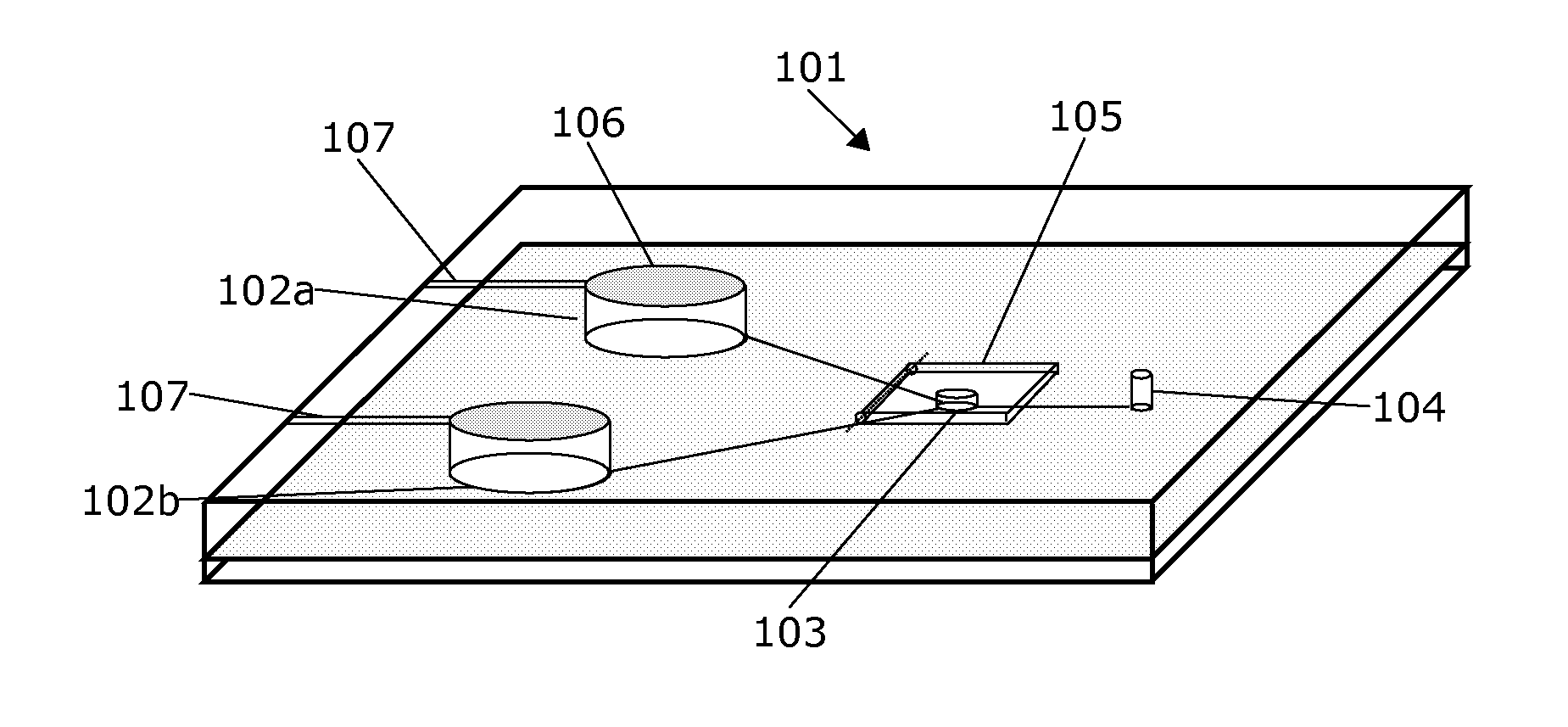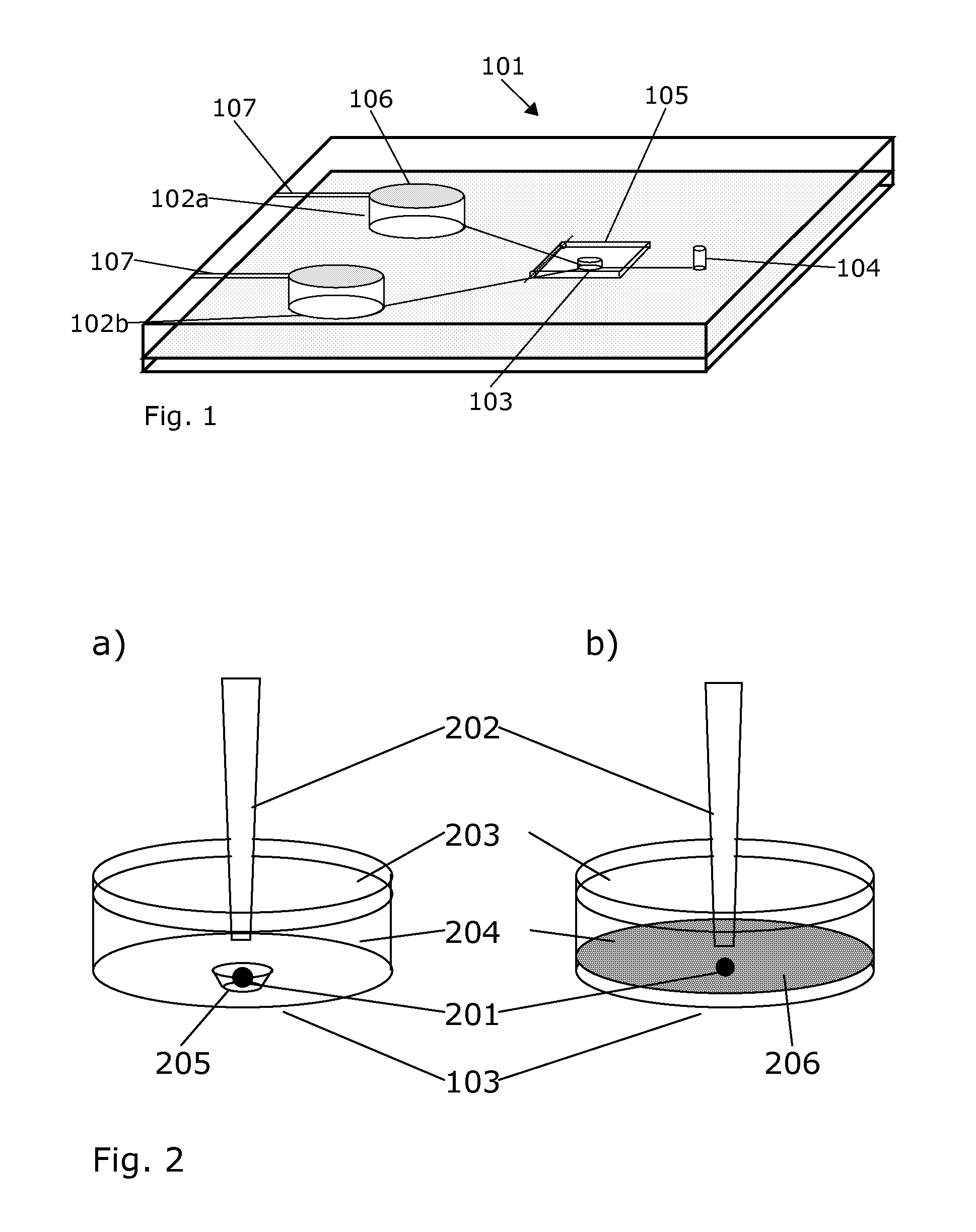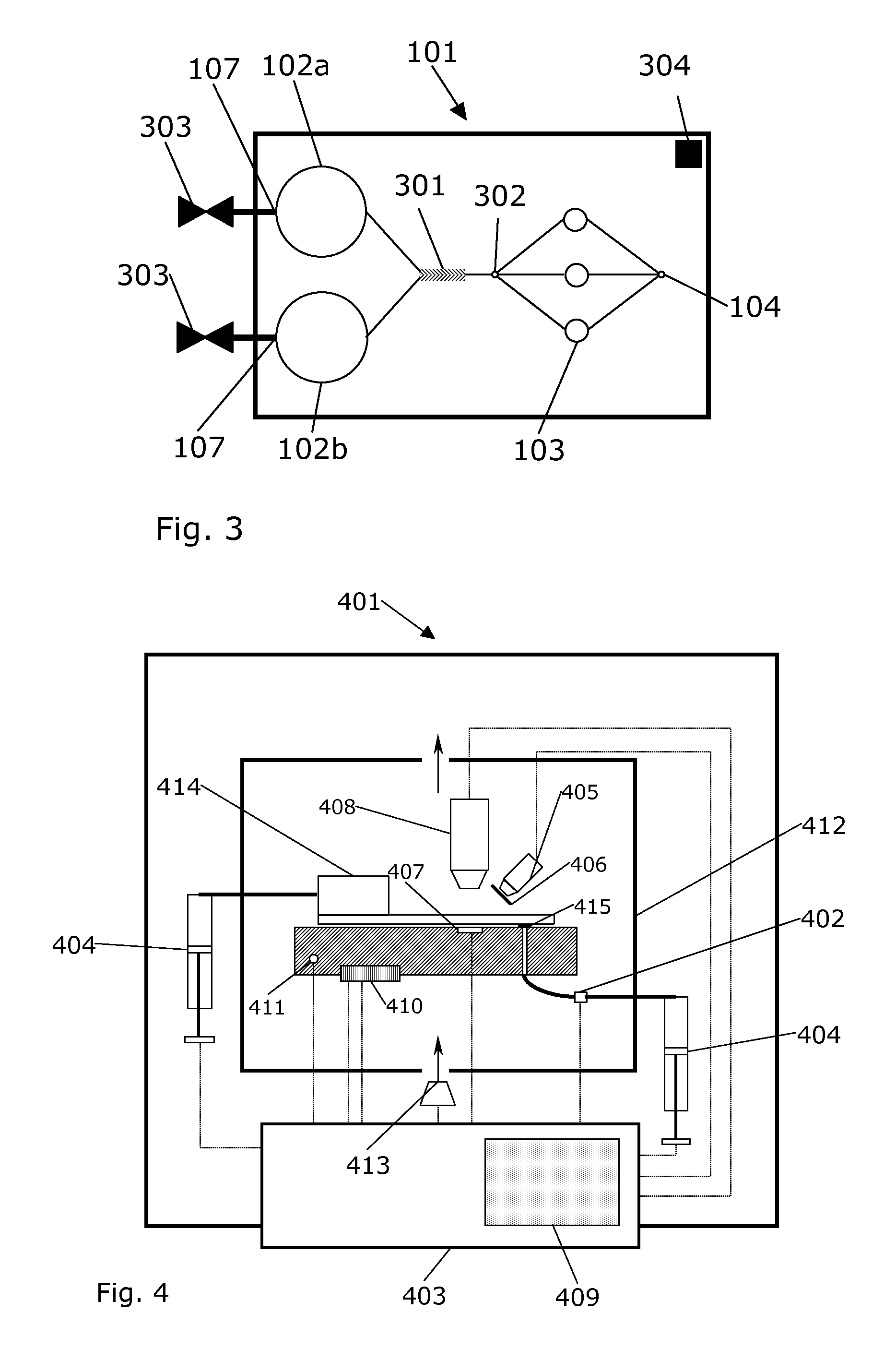Mesoscale bioreactor platform for perfusion
- Summary
- Abstract
- Description
- Claims
- Application Information
AI Technical Summary
Benefits of technology
Problems solved by technology
Method used
Image
Examples
example 1
Construction of a Mesoscale Bioreactor Platform
[0088]A prototype mesoscale bioreactor platform consisting of four layers of substrate materials was designed using the 2D drawing software Auto-CAD LT (Autodesk, San Rafael, Calif., USA). The bioreactor platform design contained two cylindrical reservoirs of 16 mm diameter and 5 mm depth (1 mL volume), which were connected to a junction by two channels. Each reservoir had a channel allowing to connect the reservoir to the ambient surroundings. A channel from the junction led to three serially connected culture chambers of 4 mm diameter and 1.5 mm depth (similar to a volume of 20 μL). Each culture chamber had a depression of approximately 500 μm diameter and 200 μm in depth in the bottom surface. A waste channel led from the third culture chamber to the ambient surroundings.
[0089]The bottom layer of the design of the bioreactor platform was a rectangular plate (5 cm×8 cm size) with a through-hole of 500 μm diameter and the three depress...
example 2
Construction of a Mesoscale Bioreactor Platform
[0093]A mesoscale bioreactor platform was designed and constructed as described in Example 1 except the three serially connected culture chambers (in the second substrate layer) were replaced with a single culture chamber of 20 mm diameter (volume 0.5 mL). The bottom of this single culture chamber contained six depression (approximately 500 μm diameter and 200 μm depth) placed on the perimeter of a circle of 10 mm diameter located in the centre of the chamber.
example 3
Construction of a Control Unit
[0094]A suitable box of a polymeric material was selected to construct a prototype control unit for housing a mesoscale bioreactor platform. The size of the box was approximately 16×24×12 cm3. The box was fitted with a compartment consisting of a smaller box for containing an aluminium block (approximately 10×7×2 cm3), to function as a heat regulating element, and either of the mesoscale bioreactor platforms described in Example 1 or Example 2. The aluminium block was machined to exactly house the bioreactor platform, and a hole (1 mm diameter) was drilled in it in a location corresponding to the location of the exit of the mesoscale bioreactor platform. The opening of the hole was expanded to house a rubber O-ring (1 mm ID), and the exit hole fitted with a piece of 0.5 mm ID Teflon tube which was connected to micro-scale pH-electrode further being connected to a 2 mL syringe pump. The pH-electrode was connected to a sensor board, which was further conn...
PUM
 Login to View More
Login to View More Abstract
Description
Claims
Application Information
 Login to View More
Login to View More - R&D
- Intellectual Property
- Life Sciences
- Materials
- Tech Scout
- Unparalleled Data Quality
- Higher Quality Content
- 60% Fewer Hallucinations
Browse by: Latest US Patents, China's latest patents, Technical Efficacy Thesaurus, Application Domain, Technology Topic, Popular Technical Reports.
© 2025 PatSnap. All rights reserved.Legal|Privacy policy|Modern Slavery Act Transparency Statement|Sitemap|About US| Contact US: help@patsnap.com



